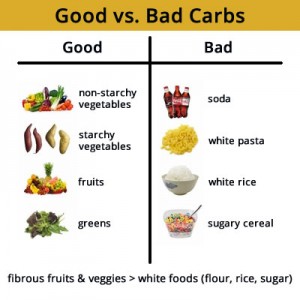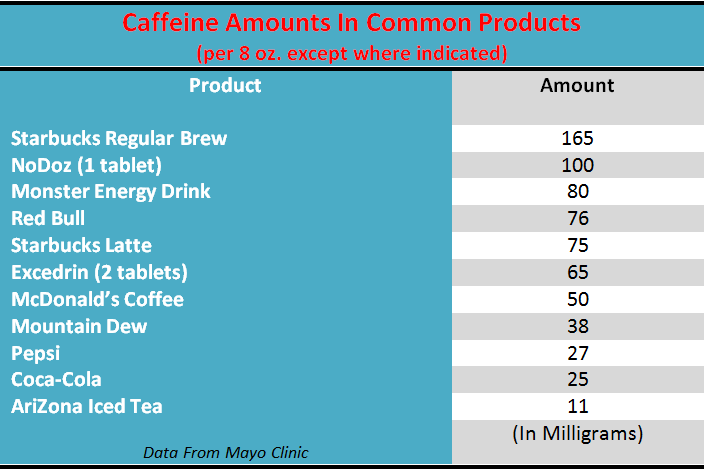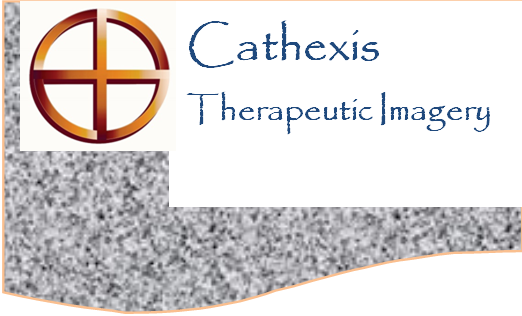The Science Of Successful Stress Management
There are two types of stress. Good stress is excitement and invigoration about a tangible event, interaction, task, performance, or challenge that causes us to think ahead and prepare. While there may be accompanying feelings of nervousness or anxiety, we respond favorably to this heightened state of arousal and rise to the occasion. The effort we put forth generally alleviates the anxious feelings. Bad stress is fear of a perceived threat. The physical body is hard-wired to protect against predators and acts of aggression, which is our fight/flight mechanism readying us for action. We ramp up physically, mentally, and emotionally, producing chemical changes necessary for an appropriate reaction. Even though threats of this nature are rare in today’s world, this innate response still occurs; yet without the corresponding exertion of physical energy—the fighting or fleeing requisite to a true survival situation—it backfires on a physiological level, creating free floating anxiety, irritability, hormonal imbalances, and a host of other health concerns.
Understanding Our Natural Stress Response
When we feel challenged, a complex natural alarm system is set in motion throughout our bodies. Our adrenal glands release a surge of hormones including adrenaline and cortisol. Adrenaline boosts energy reserves and increases heart rate and blood pressure. Cortisol increases glucose (blood sugar) in the bloodstream and enhances glucose consumption in the brain, while also moderating bodily functions that are not essential to the fight/flight response, such as the digestive and reproductive systems, immune system responses, and growth processes. And, of course, this alarm system also effects our mood and motivation (See Mayo Clinic article ‘Chronic Stress Puts Your Health At Risk’ here).
Our natural stress response is designed to be self-limiting; once we have dispensed with or retreated from a threat, hormone levels return to normal. Adrenaline and cortisol levels drop, our heart rate and blood pressure return to baseline levels, and other systems resume their regular activities. However, in the presence of constant stressors and triggers, the fight/flight mechanism may become hyperactive and the subsequent overload of cortisol and other stress hormones can disrupt almost all of our body’s processes and functions. This increases the risk of numerous health problems, including:
- Anxiety
- Depression
- Digestive problems
- Heart disease
- Sleep disorders
- Weight gain
- Memory and concentration impairment
How Diet Impacts Stress
 Since blood sugar is the primary fuel for our brain and we need more of it during times of stress, the body responds naturally by elevating glucose levels in the bloodstream. Accordingly, during stressful situations it is best to avoid refined sugars that cause these critical blood sugar levels to fluctuate, resulting in the release of insulin and additional adrenaline which we experience as anxiety, panic, and mental fatigue. The well known effects of “sugar crashes” are intensified when we are under pressure and can trigger our fight/flight mechanism, transforming good stress responses into bad ones.
Since blood sugar is the primary fuel for our brain and we need more of it during times of stress, the body responds naturally by elevating glucose levels in the bloodstream. Accordingly, during stressful situations it is best to avoid refined sugars that cause these critical blood sugar levels to fluctuate, resulting in the release of insulin and additional adrenaline which we experience as anxiety, panic, and mental fatigue. The well known effects of “sugar crashes” are intensified when we are under pressure and can trigger our fight/flight mechanism, transforming good stress responses into bad ones.
“Your mind and body perform best when you avoid the processed sugar cycle and regulate the flow of glucose to the brain.”
Sweets and simple carbohydrates have a high glycemic impact because they are rapidly absorbed into the blood stream, causing fluctuation in blood sugar levels (See American Diabetes Association article ‘The 3 R’s Of Glycemic Index’ here). Here are four tips to manage glycemic impact in our diets:
- Fruits & Vegetables: Nearly all fruits and vegetables have a low glycemic impact. Include fruits and vegetable at meals and snacks.
- Increase Soluble Fiber: Soluble fiber slows absorption time of foods in our gastrointestinal tract, which regulates the flow of blood sugar to the brain. Foods high in soluble fiber include apples, citrus fruits, oat bran, oatmeal, legumes, green beans and peas, seeds and nuts, and most vegetables.
- Combine High & Low Glycemic Foods: Higher glycemic foods can be improved by pairing them with low glycemic foods such as lean protein or unsaturated fats. For example, the glycemic impact of breads are lowered when eaten with bean soups or spread with nut butters.
- Choose Fewer Processed Foods: Eat whole-grain products and fewer refined “white” carbohydrates. Read labels and remember that just because bread is brown does not make it a good source of fiber or reduce its glycemic impact. Substitute brown rice, quinoa, and whole grain pastas, and limit portion sizes.
During stressful situations, it is especially important to realize how wise dietary choices can optimize our mental, physical, and emotional functioning, helping us avoid the negative side-effects of stress and meet our challenges in a healthy and positive way.
The Ups & Downs Of Caffeine
Although science has debated the positives and negatives for years and continues to do so, caffeine has been consumed for centuries because it stimulates energy and alertness. Nonetheless, it is clear to everyone that too much can create problems.
 The effects of caffeine are felt within minutes of being consumed, yet they have a half-life of eight hours or longer in the body and can disrupt sleep. Caffeine affects a variety of hormones related to stress, including cortisol and adrenaline, which can result in short-term benefits such as increased concentration and focus. However, these hormonal interactions may also result in unpleasant symptoms such as fatigue, exhaustion and even depression, which can negatively influence our reaction to stress. Consuming too much caffeine makes us edgy, jittery, and irritable, and we may experience heart palpitations or nausea. While small to moderate amounts of caffeine can elevate our mood and give us a boost, excessive amounts may actually make us feel more stressed and can lead to other health problems.
The effects of caffeine are felt within minutes of being consumed, yet they have a half-life of eight hours or longer in the body and can disrupt sleep. Caffeine affects a variety of hormones related to stress, including cortisol and adrenaline, which can result in short-term benefits such as increased concentration and focus. However, these hormonal interactions may also result in unpleasant symptoms such as fatigue, exhaustion and even depression, which can negatively influence our reaction to stress. Consuming too much caffeine makes us edgy, jittery, and irritable, and we may experience heart palpitations or nausea. While small to moderate amounts of caffeine can elevate our mood and give us a boost, excessive amounts may actually make us feel more stressed and can lead to other health problems.
Here are some important considerations:
- Monitor personal reactions to caffeine and calculate intake accordingly
- Remember the negative effects of caffeine may be amplified in stressful situations
- Factor in the half-life of caffeine so it does not disrupt sleep
Keeping in mind these positives and negatives, controlled doses of caffeine may be beneficial for some in the overall management of stress (See About Health article ‘Caffeine, Stress and Your Health’ here).
The Benefits Of Regular Exercise
It is a well known fact that exercise improves health and makes us feel better. But when it comes to managing stress—whether it is aerobics, weight training, martial arts, yoga, or simply brisk walking—there is a direct connection to the benefits of regular exercise (See Mayo Clinic article ‘Exercise & Stress: Get Moving To Manage Stress’ here). Physical activity stimulates the brain to produce endorphins that make us feel good, regulates blood sugar by burning calories, forces deep breathing which naturally calms us down, improves our mood and disposition, and provides a physical outlet for the stress-induced cortisol and adrenaline reaction in our bodies.
“Are you happening to life, or is life happening to you?”
It is important to find physical activities we enjoy and make them part of our routine. In the big picture of managing stress and anxiety, regular exercise enhances sleep, gives us more confidence in ourselves, increases energy and drive, and leaves us feeling in command of not just our pressures and challenges, but our lives.
Mindfulness Meditation
Meditation is an ancient discipline rooted in mysticism which is commonly used today for relaxation and stress reduction. Mindfulness meditation is a modern application of the technique used to bring our attention to the ‘present moment’ without drifting into concerns about the past or future. We diffuse information overload and quiet our thoughts by connecting the mind, body and spirit in a tranquil state of inner awareness. Meditation is a skill that becomes more effective with practice, yet we can experience the benefits immediately. Many find that guided meditation, or what is known as therapeutic imagery when administered by a certified professional, is extremely effective in invoking visualizations and sensations which are both relaxing and inspiring.  Research on the brains of meditation subjects has documented neuron growth in the hippocampus—which involves learning, memory, and emotional control—and the right anterior insula, believed to involve awareness. Studies using MRIs have recorded change in other brain areas including increases in brain-signaling connections with subjects who had meditated daily for a period of only eight weeks. And among the many other examples, there are hundreds of published studies (See article on Transcendental Meditation here) showing the effects of meditation in rewiring the brain for tranquility, happiness, and positive feelings.
Research on the brains of meditation subjects has documented neuron growth in the hippocampus—which involves learning, memory, and emotional control—and the right anterior insula, believed to involve awareness. Studies using MRIs have recorded change in other brain areas including increases in brain-signaling connections with subjects who had meditated daily for a period of only eight weeks. And among the many other examples, there are hundreds of published studies (See article on Transcendental Meditation here) showing the effects of meditation in rewiring the brain for tranquility, happiness, and positive feelings.
Meditation bestows a sense of calm and balance and is beneficial to our emotional and physical wellness. The benefits carry us more peacefully through our day and have proven helpful in aiding focus and concentration, as well as improving certain health conditions.
The three main advantages of mindfulness meditation for stress management are:
- Gaining a healthy perspective on handling stressful situations;
- Increasing awareness of our individual stress responses; and
- Achieving a positive mental and emotional attitude.
There is no right way or wrong way to meditate. It is common for the mind to wander during the process, so remember that focused breathing brings us back to the meditative state. There are different types of meditation we can try and all have similar benefits. What really matters is that practicing meditation helps us reduce stress and feel better overall.
Conclusion
Stress is a fact of life and we will likely face many unpleasant and seemingly unfair situations along the way. We will also encounter trials of opportunity and expectation that propel us to new heights of awareness and achievement. There are steps we can take that promote healthy responses to these events. We can learn to identify how we react to stress individually, and prepare ourselves mentally, physically, and emotionally to rise to these challenges.
©2014 by Shawn Quinlivan, C.Ht. & Cathexis Therapeutic Imagery
Cathexis Therapeutic Imagery specializes in innovative approaches to workplace wellness, mindfulness training, and personal development. Via private coaching, presentations, workshops, training events, and our partnership in the unique online wellness community Your Wellness Room—used by Kaiser Permanente, EFactor and other notable companies—our nationally recognized programs and practices help people and organizations make positive changes. Please call for a free consultation at (818) 512-4371 or contact us via email.



